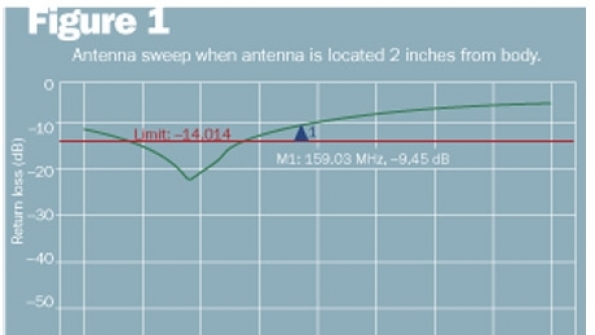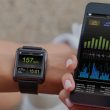Why isn’t my walkie working?
Have you ever used a walkie-talkie and felt there was something wrong with the particular radio you were using, or with the system, because the range was reduced? Have you ever wondered why some walkie-talkies seem to have much farther range than other portable radios on the same system?
Case in point: A new VHF radio system recently installed for a public-safety agency worked sometimes, and sometimes not. Specifically, it had poor range with some of the walkie-talkies but great range with others. Why did some of the units work with a range of better than 20 miles, while others exhibited a range of less than 2 miles?
The range of a radio system is influenced by the aggregate of several factors, including the following: transmitter power; receiver sensitivity; transmission line losses; antenna gain, efficiency and height; line of sight; obstructions; terrain; noise floor; and RF interference. But the items dealing with the antenna have the greatest effect on the range.
Because the fixed part of the system, often referred to as the system infrastructure, is constant for all users, the system’s base station and mobile and portable radios have the same operating parameters. The main difference is that the external environment in which a portable handset operates can change simply by the user turning around. Reception also can be affected by where the radio is worn or where the user’s hand is placed in relation to the walkie-talkie antenna.
Even though antenna efficiency has the greatest influence on both the transmitting and receiving paths, it is rarely tested. While it is easy to measure a radio’s transmitter and receiver parameters, it is quite difficult to measure the antenna parameters.
When testing antennas for walkie-talkies, especially for VHF radios, it is very important that the antenna always be at least 1 to 2 inches away from the body if the radio is worn on the belt, as close proximity of the body to the entire length of the antenna seriously detunes the antenna. In fact, it is not uncommon for the range to shrink to 1% of normal should the antenna come in contact with a person’s body. Most of the radios on the market today have the antenna mounted to the case in a manner that creates suitable distance from the body, or they have leather or canvas cases that provide adequate separation. Those of us who have “extra handles” at our midsections must use the external cases or pouches, even on the radios that have the distances built into them.
The best way to determine how well an antenna performs standing in free space compared with sitting just above a belt is to use one of the antenna analyzers — such as Anritsu’s Site Master or Bird Technologies’ Site Analyzer — with a phase-stable cable, along with the proper adapter to match the end of the phase-stable cable to the antenna.
An antenna analyzer will give a graphical representation of the antenna performance, which is better than just looking at the reflected power on a specific frequency using a wattmeter.
Under normal circumstances, a standing wave ratio (SWR) of under 1.5:1, which is equivalent to -14 dB return loss, indicates a good match at the operating frequency. A SWR of 2.0:1, which is equivalent to a -9.0 dB return loss, is the worst case that would be tolerated. At 2.0:1 SWR, the antenna is operating only at 90% efficiency, which is the bare minimum.
Field tests show that many antennas operate only within a 5 MHz window where the SWR is less than 2.0:1, and the antenna manufacturers normally label such limits on the antenna or by the model designation.
In further testing, when an antenna that is tuned correctly and has a good SWR on the normal operating frequency is placed directly next to a body — as would occur when a walkie-talkie is mounted on a person’s belt and the antenna is touching the body — the SWR goes from acceptable to terrible. In the case of the public-safety agency installation mentioned earlier, the antenna was detuned to the point that it was operating at less than 1% efficiency.
Using an antenna analyzer, it was shown that just moving the antenna away from the body by at least 1 inch caused the antenna to behave as designed and the SWR returned to the acceptable range. Some manufacturers, such as Motorola and Kenwood, have addressed this problem with antennas that are mounted so that they are moved away from the body even when there is no holster case and only the belt clip is used.
Radios manufactured by other companies that were outfitted with the recommended holster cases — resulting in the antennas moving away from the body at the recommended distance of 2 inches or more — worked as designed. (See Figure 1 on page 34.)

Should someone want to leave the radio on the belt and use a lapel microphone, then the antenna must be away from the body by more than 1 inch — preferably by 2 inches — for the radio to work properly in the VHF band. As the frequency goes up, the distance between the body and the antenna can be reduced. Although VHF antennas need the most separation distance, it can be reduced to less than an inch for UHF and higher frequencies and the antenna will continue to work properly.
The ultimate way to determine whether a radio and antenna combination is working properly is to test the field intensity to see whether it matches the predicted value for the power at a controlled distance.
Field intensity is a quantitative measurement that indicates how much signal is radiated from a radio transmitter. One of the laws of physics that prevails here is that as you increase the distance between the transmitter and the receiver, the field intensity drops by the square of the distance. In simple terms, if you double the distance, you quarter the field intensity. If you triple the distance, the field intensity will drop by a factor of 1/9 the original value. If you quadruple the distance, the signal will be 1/16 the original value. A second factor is the free space attenuation of radio signals, which is expressed in Equation 1 above.

This formula works for line-of-sight signals. Any obstructions such as trees, buildings, vehicles or people will attenuate the signal to some extent. In this case, the body could block the antenna signal path to and from the base station site. Also, if line-of-sight conditions do not exist due to terrain obstructions, there will be severe losses between the transmitter and the receiver. Finally, it should be noted that the curvature of the earth prevents a signal from being line-of-sight over very great distances.
When a walkie-talkie radio is used without a lapel microphone, the radio is brought up to the face of the user, and the antenna is usually above the user’s head so that it does not matter which direction the user is from the base station or repeater with which they are communicating. When a lapel microphone is used with a portable radio, the handset is directional in such a way that when the body of the user blocks the radio and antenna from the other user or repeater, the signal will be attenuated to some extent.
This condition also is present with VHF radio systems, but not to the extent that most users need to worry about it. On UHF and higher frequencies, such as 700 MHz, 800 MHz and 900 MHz systems, the manufacturers of the radio systems put the antennas on the lapel microphones to lessen these directional effects. It was through field intensity tests that the manufacturers determined lapel microphone antennas were needed for these higher frequencies. Many of the UHF and higher frequency systems use multiple receivers and a voting system so that users in the field do not need to worry about which direction they are facing when using their radios.
A walkie-talkie still is the preferred mode of communications for many companies and agencies. Over the years, such radios have become very small, reliable and user-friendly. The one component that has not changed across the decades of use is the antennas. Due to the laws of physics, the antennas must be a certain length that corresponds to the frequency being used. When the antennas are placed so that they touch the body of the user, they will be detuned and no longer perform properly. Just an inch or two away from the body will ensure the antenna works as designed for VHF radios, and less for the higher frequencies. When your radio system fails to work as designed or expected, do not forget to look at the antennas of the walkie-talkies as the problem.
Ira Wiesenfeld, P.E., CETsr, is a licensed engineer in the state of Texas who holds an advanced class license (WA5GXP) as well as a GROL. He has been involved with commercial radio systems since 1966 and has a BS degree in electrical engineering. Wiesenfeld is the author of Wiring for Wireless Sites and can be reached at [email protected].

















